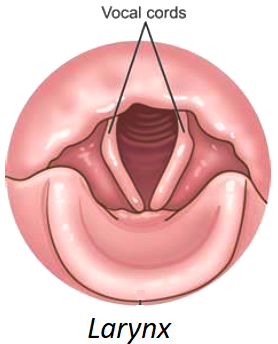NCERT Solutions Class 8 Science
The NCERT Solutions in English Language for Class 8 Science Chapter – 13 (Sound) has been provided here to help the students in solving the questions from this exercise.
Chapter – 13 (Sound)
1. Choose the correct answer.
Sound can travel through
(a) gases only
(b) solids only
(c) liquids only
(d) solids, liquids and gases
Answer – (d) solids, liquids and gases
2. Voice of which of the following is likely to have a minimum frequency?
(a) Baby girl
(b) Baby boy
(c) A man
(d) A woman
Answer – (c) A man
3. In the following statements, tick ‘T’ against those which are true and ‘F’ against those which are false.
(a) Sound cannot travel in a vacuum. (T/F)
(b) The number of oscillations per second of a vibrating object is called its time period. (T/F)
(c) If the amplitude of the vibration is large, the sound is feeble. (T/F)
(d) For human ears, the audible range is 20 Hz to 20,000 Hz. (T/F)
(e) The lower the frequency of vibration, the higher the pitch. (T/F)
(f) Unwanted or unpleasant sound is termed as music. (T/F)
(g) Noise pollution may cause partial hearing impairment. (T/F)
Answer –
(a) Sound cannot travel in a vacuum. (True)
(b) The number of oscillations per second of a vibrating object is called its time period. (False)
(c) If the amplitude of the vibration is large, the sound is feeble. (False)
(d) For human ears, the audible range is 20 Hz to 20,000 Hz. (True)
(e) The lower the frequency of vibration, the higher the pitch. (False)
(f) Unwanted or unpleasant sound is termed as music. (False)
(g) Noise pollution may cause partial hearing impairment. (True)
4. Fill in the blanks with suitable words.
(a) Time taken by an object to complete one oscillation is called __________.
(b) Loudness is determined by the __________ of vibration.
(c) The unit of frequency is __________
(d) Unwanted sound is called __________.
(e) The shrillness of a sound is determined by the __________ of vibration.
Answer –
(a) Time taken by an object to complete one oscillation is called the time period.
(b) Loudness is determined by the amplitude of vibration.
(c) The unit of frequency is hertz.
(d) Unwanted sound is called noise.
(e) The shrillness of a sound is determined by the frequency of vibration.
5. A pendulum oscillates 40 times in 4 seconds. Find its time period and frequency.
Answer – Time period is defined as the time required to complete one oscillation.
Frequency is defined as the number of oscillations per unit time.
Time = 4 sec.
Time Period = (Time taken) / (Number of Oscillations)
Time Period = = 0.1 sec.
Frequency = (Number of Oscillations)/ (Time taken)
Frequency = = 10Hz.
6. The sound from a mosquito is produced when it vibrates its wings at an average rate of 500 vibrations per second. What is the time period of the vibration?
Answer – Frequency = 500 vibrations/second.
Time Period = (Time Taken)/ (Number of Oscillations)
= = 0.002 sec.
7. Identify the part which vibrates to produce sound in the following instruments.
(a) Dholak
(b) Sitar
(c) Flute
Answer –
(a) Dholak – Dholak has stretched membranes that vibrate to produce sound.
(b) Sitar – In sitar, the stretched strings, when vibrate, they produce sound.
(c) Flute – In flute, the air column inside it vibrates and produces sound.
8. What is the difference between noise and music? Can music become noise sometimes?
Answer –
| Noise | Music |
| Sounds which are not pleasant to hear is called Noise | Sounds which are pleasant to hear is called Music |
| We do not like such sounds | We like such sounds |
| Example – Sounds produced by musical instruments like guitar, piano | Example – Sounds of Vehicles, Bursting of Crackers |
9. List sources of noise pollution in your surroundings.
Answer – Noise pollution sources in ou surroundings are listed below:
- Sounds of Vehicles
- Bursting of Crackers
- Loudspeakers at High Volume
- Kitchen Appliances (like Hand Mixer)
- Electronic Appliances (like TV)
- Barking of dogs
10. Explain in what way noise pollution is harmful to humans.
Answer – A number of health issues are associated with noise pollution. They are as follows:
- It disturbs sleep
- It can cause hypertension (high BP)
- It can cause temporary or permanent loss of hearing
- It can cause a person to lose concentration at his work.
- It can cause irritation and headache.
11. Your parents are going to buy a house. They have been offered one on the roadside and another three lanes away from the roadside. Which house would you suggest your parents should buy? Explain your answer.
Answer – I would suggest my parents to buy a house which is three lanes away from the roadside. This is because the house on the roadside would receive a lot of noise pollution due to honking of vehicles. As the intensity of sound decreases as distance increases, the house farther from the roadside is recommended.
12. Sketch the larynx and explain its function in your own words.
Answer – The voice box of human beings is called Larynx. There are 2 vocal cords attached to it. Sound is produced by the vibration of the vocal cords.

13. Lightning and thunder take place in the sky at the same time and at the same distance from us. Lightning is seen earlier, and thunder is heard later. Can you explain why?
Answer – The speed of light (3×108m/s.) is more than the speed of sound (340m/s.). Thus, lightning is seen first, which is accompanied by thunder later.

Leave a Reply